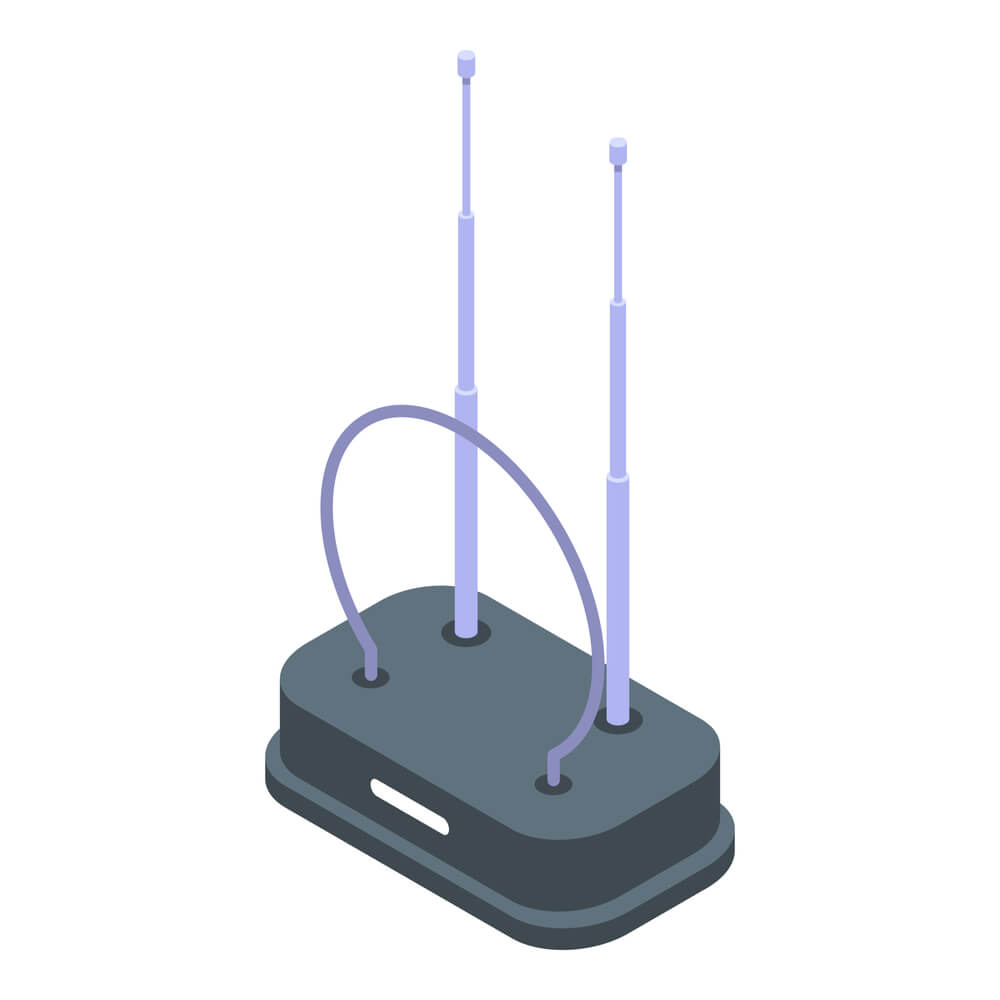Indoor TV antennas have transformed the way Australians access television. They are cost-effective alternatives to traditional systems of cable subscriptions.
These antennas are a good choice for people who want to save money and for those who want to be more environmentally friendly by using free TV channels.
Despite their growing popularity, questions arise about their effectiveness in Australia’s diverse landscapes and urban environments.
In this article, we look closely at the features of indoor digital TV antennas, discussing what makes them perform well in Australia.
Features of Indoor TV Antennas
UHF/VHF Signal Reception: Indoor TV antennas are designed to pick up either UHF (Ultra High Frequency) or VHF (Very High Frequency) signals. These signals are what broadcast TV channels use to transmit programs.
It’s important to check which type of signals your antenna can receive based on where you live. Some areas may have better reception with VHF, while others may require UHF.
Amplification: Some indoor TV antennas come with a built-in amplifier. This amplifier boosts the signals, which can improve the reception quality.
However, there are some drawbacks to amplifiers. Sometimes, the amplifier can boost the signals too much, causing an overload in your TV’s tuner. This can result in no channels being received at all.
Additionally, without an LTE filter, the amplifier can also pick up unwanted signals that leads to interference with your TV’s reception.
It’s important to note that the effectiveness of built-in amplifiers can also depend on where you place your antenna. If you place it in an area with poor signal reception, the amplifier may not work effectively. Experts often recommend choosing indoor antennas without built-in amplifiers for more reliable performance.
4G/5G filters: With the rise in 4G and the introduction of 5G frequencies in Australia, having a filter for these signals in your antenna is important. Therefore, before purchasing an indoor antenna, check whether it has 4G or 5G filters.
Appearance: Indoor TV antennas come in various designs and styles. It’s essential to choose one that not only matches your TV system’s aesthetic but also functions well.
Do indoor antennas really work in Australia?
Experts say, indoor antennas work very well in Australia. In fact, Indoor antennas are a practical choice for many Australians who want to access free-to-air TV channels without the need for an outdoor antenna.
They are easy to install and can be placed anywhere inside your home, making them suitable for apartments, rental properties, and areas where outdoor installations are restricted.
In Australia, indoor antennas can provide decent reception in areas with strong signal coverage, especially when placed near a window or in a location with minimal obstructions. They are also more affordable than outdoor antennas, making them a cost-effective option for many households.
How effectively does indoor antennas work in Australia?
Indoor antennas can work quite well in Australia, but their effectiveness depends on a few factors that you should keep in mind to get the best reception.
Location of antenna
First, consider your location relative to the broadcast towers. If you’re in a city or close to a tower, you’re likely to get better reception. However, if you’re in a rural area or surrounded by tall buildings or hills, your reception might not be as good.
Placement of Indoor Aerials
Next, think about where you place the antenna in your home. Placing it near a window facing the direction of the broadcast towers can help improve reception. Also, avoid placing the antenna near large objects or electronics that can interfere with the signal.
Importance of Antenna Quality
The quality of the antenna itself also plays a role. Higher-quality antennas tend to provide better reception than cheaper ones.
Signals are transmitted in Australia on VHF band 3 (channels 6-12). For UHF signals, it is band 4 & 5 (channels 28-51). Urban areas usually use VHF, while rural areas use UHF.
So, look for antennas that are designed to pick up both VHF and UHF signals, as these are the frequencies used for TV broadcasting in Australia.
While indoor antennas can work effectively in Australia, it’s important to consider these factors to ensure you get the best reception possible for your digital TV signals.
Choosing the best Indoor TV Aerial in Australia
If you want to buy the best indoor digital TV antenna Australia, there are a few things you should consider. Here’s what to look out for:
- Digital Signal Compatibility: Make sure the indoor antenna you choose can receive digital signals. Most indoor antennas today are designed for digital signals, but it’s always good to double-check.
- Band and Channels: Check that the indoor antenna’s band and channels match the transmission specifications in your area
- Location: Consider your location when choosing an indoor antenna. If you live in a high-density metropolitan area, a VHF antenna might be more suitable. However, if you live in a regional or low-density area, a UHF antenna may be better.
By considering these factors, you can choose an indoor antenna that will provide you with the best possible reception in Australia.
Best Practices for Using Indoor Digital TV Antennas in Australia
To improve the reception of your indoor digital TV antenna Australia, consider the following tips:
- Place the antenna near a window facing the broadcast tower.
- Use a higher-quality digital aerial for better reception.
- Avoid placing the antenna near electronic devices or appliances that can cause interference.
- Use a signal amplifier if needed, especially in areas with weak signals.
Conclusion
Indoor digital TV antennas can work effectively in Australia, especially in urban areas with good signal coverage. However, the reception may be affected in regional areas due to the distance from broadcast towers and local geography.
By following best practices and considering the factors affecting reception, you can enjoy free over-the-air TV content with a high-quality indoor TV antenna.



